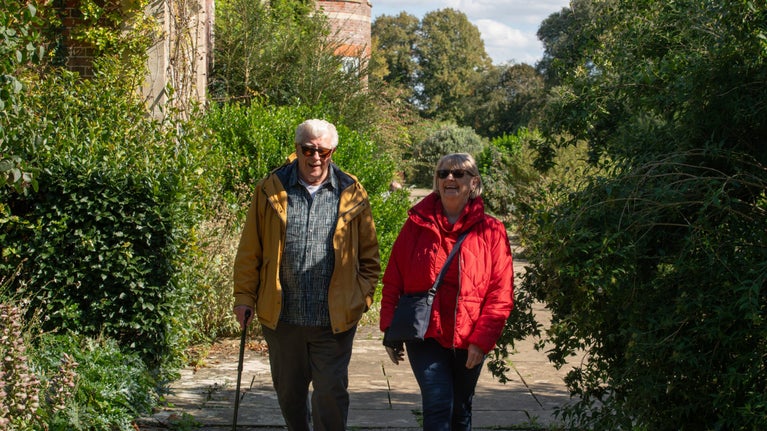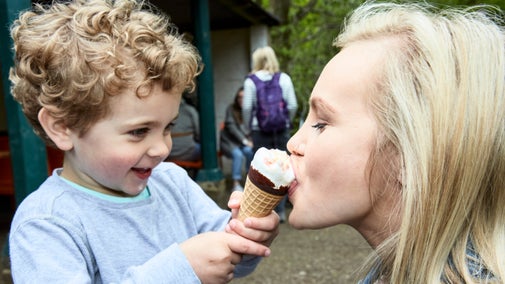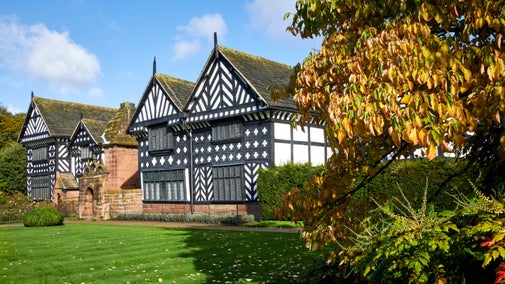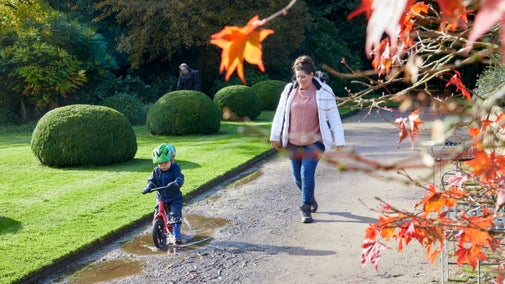
Become a member
Join today and help protect nature, beauty and history – for everyone, for ever. Enjoy access to more than 500 places with National Trust membership.
A green oasis on the edge of Liverpool with a rare Tudor house at its heart
The Walk, Speke, Liverpool, L24 1XD

| Asset | Opening time |
|---|---|
| Hall | Closed |
| Gardens | 10:00 - 17:00 |
| Restaurant | 10:00 - 16:30 |
| Ticket type | With Gift Aid | Without Gift Aid |
|---|---|---|
| Adult (18+) | £15.40 | £14.00 |
| Child (5-17) under 5s free | £7.70 | £7.00 |
| Family (2 Adults and up to 3 children) | £38.50 | £35.00 |
| Family (1 adult and up to 3 children) | £23.10 | £21.00 |
| Group (Adult 18+) | £10.50 |
| Ticket type | With Gift Aid | Without Gift Aid |
|---|---|---|
| Adult (18+) | £20.90 | £19.00 |
| Child (5-17) under 5s free | £10.50 | £9.50 |
| Family (2 Adults and up to 3 children) | £52.30 | £47.50 |
| Family (1 adult and up to 3 children) | £31.40 | £28.50 |
| Group (Adult 18+) | £15.00 |
Second-hand bookshop at Home Farm, opening times vary
Dogs on leads allowed in most areas of the grounds except kitchen garden, play areas, maze and Giant Childe of Hale trail. Assistance dogs only inside the house
Home Farm restaurant open every day, serving a range of hot food, snacks, cakes and drinks
Stable Tea-Room open on peak days
Toilets available at Home Farm and in Dairy Courtyard by the house including accessible toilets and baby-changing facilities
Designated mobility parking spaces. Accessible toilets. Level entrance to house, ground floor wheelchair accessible. Garden mostly flat, some steep gradients. Unfortunately, no mobility scooters are allowed in Speke Hall house. Please be advised we have manual wheelchairs to borrow (not self-propelling), contact the Speke Hall office to book a wheelchair ahead of your visit.
Accessible toilets at Home Farm and in Dairy Courtyard by the house
Several designated parking spaces located close to Visitor Reception
Level access to Home Farm restaurant. Access to Stable Tea-Room is by ramp at the rear
Level access to second-hand bookshop
Most paths in the formal garden are level access. The ground floor of the house is level access, however access to the first floor is by stairs only
Limited number available, please call us in advance to book a mobility scooter - 01514277231
Benches located in various parts of the garden, picnic tables located on the orchard and at Home Farm
Limited number available, please call us in advance to book a wheelchair - 01514277231
Make your own adventure every time you visit Speke Hall. Zoom along a zip wire in the woodland play area, find space to run and play on the North Lawn or indulge curious minds inside the Tudor house. And this summer there’s even more ways to play together.

Find out about our neighbours' and community passes to visit to Speke Hall as many times as you like throughout the year.

Dogs on leads are welcome to explore most areas of Speke Hall's grounds. Find out where you can go with your dog, what facilities are available to them and other important information at this two pawprint rated place.

Situated within eight miles of the centre and boasting excellent motorway links, this Tudor manor is ideally located for group leisure and educational visits.

A rare Tudor manor with a Victorian personality. Home to a priest hole, Gothic Revival furniture and William Morris wallpaper
A varied garden featuring colourful borders, kitchen garden, traditional orchard, manicured lawns and sheltered woodland, known for its bluebells.
A green oasis of semi-ancient woodland and acres of fields and paths on the edge of the River Mersey, surrounded by industrial Liverpool.
Once the heart of the estate, Home Farm restaurant serves a range of meals and treats. Stables Tea Room serves light refreshments.
Gated and woodland play areas, the interactive Giant Childe of Hale play trail and a mind-boggling hedge maze.
Tucked away at Home Farm, Speke's Volumes sells a wide variety of pre-loved books.
70 acres of land stretching alongside the banks of the Mersey, home to varied birdlife. Gate open during opening times only.
Make your own adventure every time you visit Speke Hall. Zoom along a zip wire in the woodland play area, find space to run and play on the North Lawn or indulge curious minds inside the Tudor house. And this summer there’s even more ways to play together.

Home Farm restaurant is open every day for you to grab a drink or a bite to eat. Afterwards, pop into the second-hand bookshop to find a pre-loved gem.

From peaceful strolls through colourful borders, to adventures in the woodland and spotting wildlife in the secret garden, there's plenty of seasonal joy to find at Speke Hall.

Discover the hall's fascinating objects and architectural features and learn about the Norris family’s dangerous life under Elizabethan rule.

Discover what Liverpool and Lancashire have to offer, from Tudor halls to the childhood homes of the Beatles, plus parks, gardens, moorland and coasts.

Explore the wider Speke Hall estate to discover a green oasis in urban Liverpool. Walk through colourful meadows and woodlands with unexpected histories while spotting fascinating wildlife.

Explore the hidden paths around the garden and through the ancient woodland surrounding Speke Hall.

Take a stroll along the historic boundary of the Speke Hall estate to the Mersey shoreline. It's easy terrain and a good distance for children.

Enjoy an easy stroll taking in views of the Tudor hall and restored garden from every angle.

Home Farm restaurant is open every day for you to grab a drink or a bite to eat. Afterwards, pop into the second-hand bookshop to find a pre-loved gem.

Try your hand at making some Wet Nelly, a cake with history that's become a firm favourite over the years at Speke Hall. It's perfect hot with custard or cold with a cup of tea.

Originally brought to Liverpool by Northern European sailors and known as 'labskause', this is the region's best known dish and what all Liverpudlians came to be known as.

Join us in the Orchard on Saturday 27th September for a scrumptious and informative Apple Day, in partnership with Alchemic Kitchen.
Prepare for a scare as the dark nights close in this Halloween as the Lady in Black returns to Speke Hall on the 10th, 16th and 19th of October.
An atmospheric piece of theatre, ideal for fans of The Wicker Man and Witchfinder General.
Our Garden Team at Speke Hall need your help to tidy up the Autumn leaves before they turn to mud.
This spooky season, discover the secrets of the brilliant bats of Speke Hall.
A Sorceress has moved into Speke Hall and taken over some of our rooms!
Speke Hall is a rare Tudor timber-framed manor house in an unusual setting on the banks of the River Mersey. Restored in the 19th century, it is a unique mixture of Tudor simplicity and Victorian Arts and Crafts aesthetics.
Built by the devout Catholic Norris family, eager to impress visitors with the grandeur of their home, Speke Hall embodies more than 400 years of turbulent history. Its secret priest hole reflects Catholic persecution in the Tudor period, whilst much of the Hall’s upkeep was financed first by the Norris family’s, and later by the Watt family’s, longstanding involvement in transatlantic slavery. From building the world’s largest slave trading port to slave-ownership, investment in slave-trading voyages and shipping of slave-produced goods, these aspects of the owners’ histories are embedded in the Hall’s walls. During the 18th and 19th centuries, Speke Hall experienced years of neglect and decay, including a spell when it was used as a cow shed. Finally pulled into the Victorian era of improvement and technology, the Hall was resuscitated with a Gothic revival style.
In the 21st century, Speke Hall and its surrounding estate provide a place to reflect on past and present, and about how the legacies of history remain relevant today. The Hall is surrounded by restored gardens and protected by a collar of woodland.
Since Sir William Norris began building Speke Hall in 1530, its survival hasn't always been guaranteed. Discover the stories of the people who have lived at Speke Hall.

Learn how Speke Hall’s close proximity to Liverpool, once Britain’s largest slaving port, enabled its owners to play key roles in the British empire for nearly four hundred years.

Learn about the important work that the conservation team are doing to preserve Speke Hall in Liverpool and the tools they use to do so.

Discover how we care for the garden and estate at Speke Hall and how we’re helping wildlife including bees and butterflies to thrive.

Find out more about how community groups and volunteers recently planted over 1,200 trees on Speke Hall's estate to improve habitats, store carbon and bring people closer to nature.

Discover volunteering opportunities at Speke Hall, from bringing the story of this special place to life as a room guide to getting your hands dirty with the garden team.

Find out about the supporter groups you can join in Liverpool and Lancashire including the Bolton Association, Ormskirk and District Association and the Southport and Formby Association.


Join today and help protect nature, beauty and history – for everyone, for ever. Enjoy access to more than 500 places with National Trust membership.
By sharing your email address you’re agreeing to receive marketing emails from the National Trust and confirm you’re 18 years old or over. Please see our for more information on how we look after your personal data.